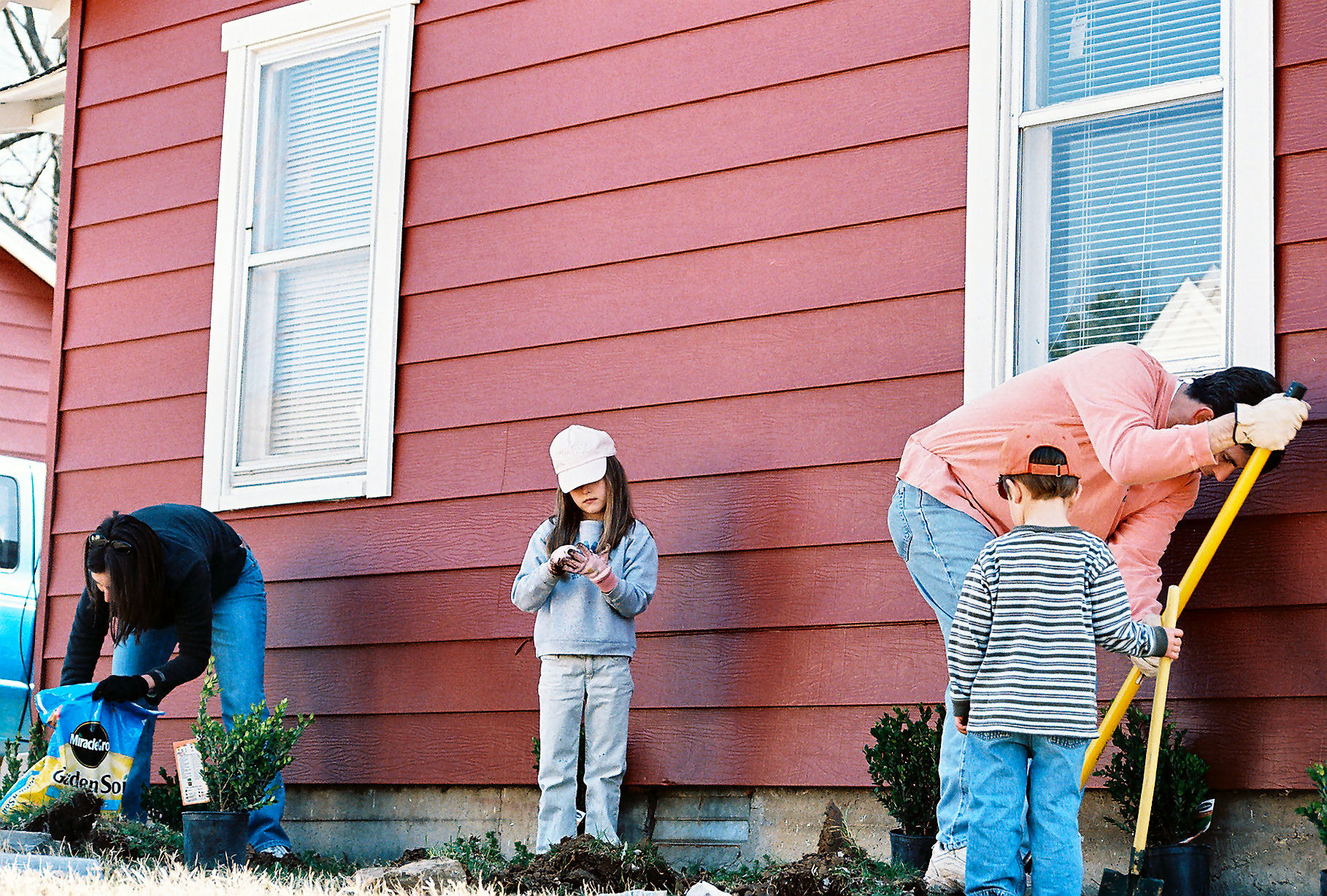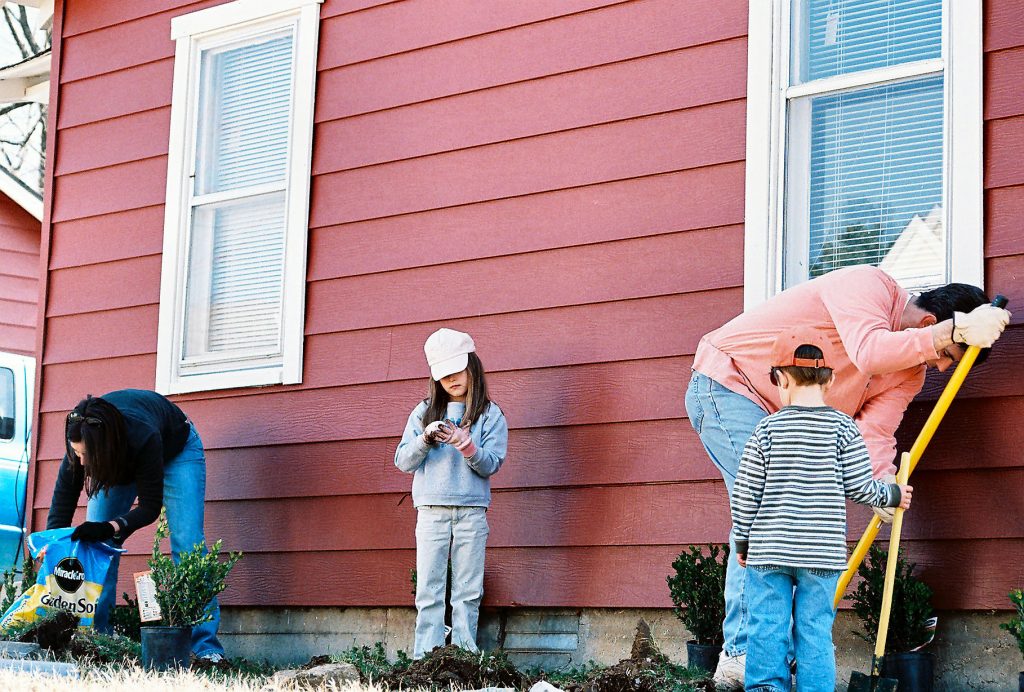
One of the most energy-saving aspects of family life is that, no longer alone, you can stop running and reaching from one end to the other of your slightly-too-big do-it-yourself project. Having a family greatly ups your chances of a positive response to the question “Can somebody hold the other end of this for a minute?”
Silliness aside, working on energy-saving projects together as a family is a great way to teach children creative skills they can use for the rest of their lives. Working together teaches kids ways to converse energy, but it also makes time to share values and hopes for the future, both yours and theirs. Many grown children, asked to describe their parents, will talk about a time when they worked together—baking cookies, sewing curtains, painting the porch. Many family traditions and attitudes have their roots in these times of shared work and purpose.
Teaching Kids to Use Energy Wisely
A great way, therefore, to share your concerns about using energy wisely is to include your children in projects that treat resources with respect and keep your energy budget on track. Energy conservation can seem a bit abstract when you’re talking electricity rates, kilowatt hours and convection. It gets a lot more real, and a lot more meaningful, when the blanket you help make for the water heater keeps the heat in the tank, instead of letting it escape into the basement air, and dad lets you see the results on the electric bill.
Here are some simple projects, requiring simple materials and fairly basic skills to produce effective energy-saving results. You can use them to let your children experience learning to use glue, tape and staples for something besides an art project. Scrap wood is forgiving when measured, cut, drilled or nailed by beginning carpenters. Often projects can be completed with materials you already own or there is room to improvise with what you have (parts of a surplus palette and heavy plastic film make as good a window-well cover as plexiglas and scrap plywood). The most appealing quality of all the projects is that they allow time to talk. At the same time they save money on your energy costs.
4 Family Projects to Save Energy at Home
Unsure of your own skills? A wealth of DIY videos make it easy for you to learn what you may be missing. Let your kids watch, too—a project that starts with TV, oh boy! Since your children are electronically quicker than you are, there’s a danger that somehow you’ll get backed into a DIY project that involves a whole weekend constructing a drone-shaped treehouse or a castle big enough for your own princess, but, hey, in families these things happen. Worth the risk–and you still save money!
- An insulating blanket for your hot water heater. This one’s a slam-dunk. Touch your water heater. If it feels hot, you have a money-saving opportunity—the U.S. Department of Energy estimates that you can lower annual water-heating costs by 7 to 16 percent by keeping the heat inside the heater. DOE estimates the project will pay for itself in a year. Since your water heater’s are one of the biggest wattage-hogs in many houses, and you know how often the dishwasher, clothes washer, shower and bathtub run, that’s money you want to save. You and your helpers need to turn off the heater, then measure its height and circumference, and head to the hardware store. You will need an inexpensive premade insulating blanket, duct tape and utility scissors to do the job. Assemble your posse of blanket-holders, trim around tank inlets, outlets and controls and tape the blanket in place. Turn the heater back on and check your work. Does the tank feel cooler? So will your budget!
- Make window-well covers. Window wells let half-sunk or below-ground basement windows let in light. Unfortunately, they also provide easy entry to damp and cold air. Scrap wood or palette pieces and plexiglas panels or heavy transparent plastic film make effective well-covers that still let some light in, while cutting down on the cold and damp. Depending on how the wells are built, you can make covers that sit flat on the rim or lean against the basement wall. Edge your well covers with stones to keep them from blowing away. Extend their lives with a coat or two of leftover paint. Your helpers can learn to use a measuring tape, saw, and screwdriver. Older kids can try out your drill and perhaps a staple-gun with supervision.
- Basement or garage windows provide another unglamorous, but important learning area for energy conservation. DIY videos offer a variety of simple construction methods for utilitarian storm windows. Framing strips held together with screw-on angle irons are sturdy enough to hold lightweight plexiglas panels, and foam strips fill in the small gaps created by old construction and new weatherproofing. If framing your panels makes them too big for your windows, try edging the panels with heavy tape and using more foam.
- Sometimes you need a big project to feel a sense of accomplishment. Big like your garage door. Energy experts estimate that insulating a garage door can raise the temperature of the garage by 10-12 degrees Fahrenheit. That doesn’t sound like much when the garage stands a number of feet down the driveway behind the house. It sounds like a lot when the garage is the bottom floor of your old-fashioned split level, and it’s right under your bedroom. It sounds like even more when water pipes are routed through the garage and 10-12 degrees Fahrenheit is the difference between pipes getting chilly or freezing and bursting in a sudden cold spell. Your local utility provider may have advice on the best materials to use for this good-sized project. Your local hardware store or home center will offer a variety of insulators, and, depending on your door, the weatherstripping and insulating materials could cost as much as $100-200. Insulating the door, however, can save on energy costs and address substantial comfort issues in the rooms over the garage.
Results Will Show in Your Electricity Bills
It may not be as much fun as building a tree house, but few things are. As your energy conservation family projects begin to show results in your electricity bills, you might put the savings toward a tree-house construction fund. And there’s always that castle. . . . Work together, share ideas, save money and make your world a better place. Now that’s family do-it-yourself!










